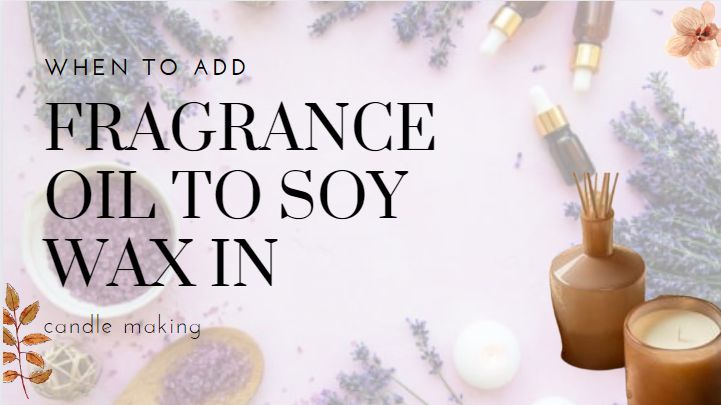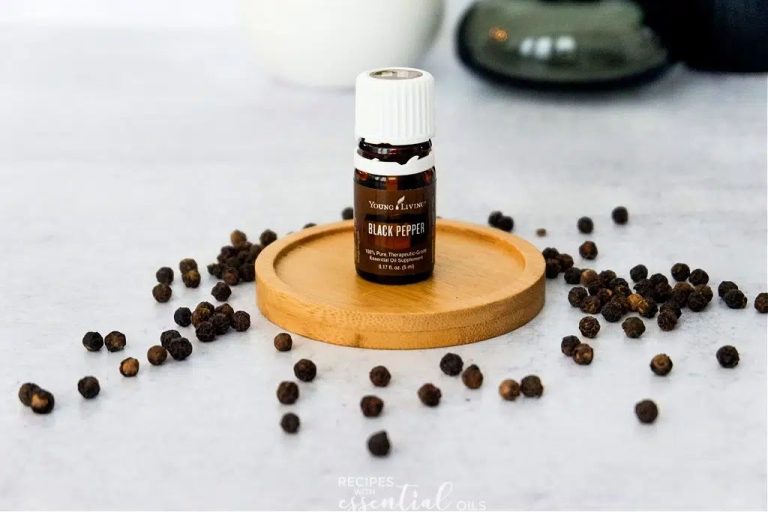How Do You Get Wax In Candles To Smell Certain Ways?
Scented candles have become increasingly popular over the past several years. In 2022, citrus/lemon was the most popular scent, accounting for over 15% of the global scented candle market according to Statista. The growth in demand for scented candles is being driven by consumer interest in home fragrance products and aromatherapy. The global scented candle market is projected to reach USD $5.52 billion by 2030 according to Yahoo Finance.
Scented candles release fragrance into the air as the wax melts from the heat of the flame. Specific scents are achieved by adding fragrance oils, essential oils, or other aroma compounds into the wax. When the candle is burned, the heat causes the wax to melt and the aroma molecules are released into the air. The type and amount of fragrance added determines the candle’s scent. This article provides an overview of how different candle ingredients and methods are used to create scented candles with specific aromas.
Candle Wax Basics
The most common types of wax used in candle making are paraffin, soy, beeswax, and palm wax. Each wax has different properties that affect how well they hold and release fragrance (https://www.marthastewart.com/8061950/candle-wax-type-guide).
Paraffin wax, made from petroleum, is inexpensive and excellent at holding scent throw. However, it can release more soot and requires added oils for ideal performance. Soy wax, made from soybeans, burns cleanly but may not retain scents as long as paraffin. Beeswax, made by honey bees, has a lovely natural honey aroma but can be expensive. Palm wax blends well with other waxes but has little scent retention on its own.
The wax type determines scent throw and longevity. Testing waxes and wick types is key to finding the right balance for the desired fragrance. In general, paraffin and soy wax blends optimize performance, while natural waxes like beeswax appeal for their pure ingredients.
Adding Fragrance Oils
Fragrance oils are concentrated aromatic oils that are added to candle wax to provide scent. There are many different fragrance oils to choose from, including floral, fruit, spice, and seasonal scents like pumpkin or pine. According to CandleScience.com, fragrance oils are formulated specifically for use in candles, as opposed to essential oils which can fade quickly or cause sooting issues.

When adding fragrance oil, a usage rate of 6-10% is typical for container candles. Gel candles and pillars may use a lower fragrance load closer to 4-6% (TheFlamingCandle.com). It’s best to follow the manufacturer’s recommended usage rate. Too much fragrance oil can cause issues like seepage or poor scent throw. Start low at 6% then increase in small increments if more fragrance is desired.
Fragrance oils should be added to wax that has completely melted and is near the pouring temperature, around 180-200F. Stir thoroughly to fully incorporate. Adding at higher temperatures helps bind the fragrance to the wax, while adding to cooler wax may cause the fragrance to rise to the surface (LoneStarCandleSupply.com).
Essential Oils
Essential oils are natural oils extracted from plants that contain the plant’s true essence and aroma. Unlike synthetic fragrances, essential oils are derived directly from nature and not created artificially in a lab. Popular essential oils for candle making include lavender, eucalyptus, lemon, and peppermint.
The main difference between essential oils and fragrance oils is that fragrance oils are synthetic reproductions of scents while essential oils come directly from natural ingredients. Fragrance oils also tend to be stronger and longer lasting in candles compared to essential oils.
When using essential oils in candles, some usage tips include:
- Use up to a 3% concentration of essential oils in your candle wax.
- Mix essential oils with a small amount of carrier oil before adding to wax to help disperse the scent.
- Add essential oils after the wax has cooled below 185°F to retain aromatic qualities.
- Combine essential oils with synthetic fragrances to balance strength.
Overall, essential oils from plants provide a pure, natural scent for candles, but need to be used carefully to avoid burning off quickly.
Drying Agents
Drying agents are added to candle wax to help absorb any excess oils that did not get fully incorporated into the wax. This helps prevent the candle from sweating or leaking oil once it has cooled and hardened. Drying agents soak up the extra oils in the wax and lock them into place.
Some common drying agents used in candle making include:
- Diatomaceous earth – This powder helps absorb oils and prevent candle sweating. It is made from fossilized remains of diatoms, a hard-shelled algae.
- Calcium carbonate – Also called whiting, this mineral powder is very effective at absorbing oils in candle wax.
- Kaolin clay – This soft white clay is another excellent oil absorber. It helps harden candles and prevent weeping.
- Bentonite clay – This absorbent clay can soak up oils and give candles a smooth finish.
Drying agents are typically added at a rate of 1-3% by weight. Adding too much can make the wax brittle or prevent the candle from burning properly. The right amount will soak up excess oils without changing the wax properties significantly.
Colorants
Colorants like liquid dyes and pigments can impact the scent of a candle. Although dyes and pigments themselves don’t have a scent, they can alter how fragrance oils and essential oils smell when added to wax. Here’s why:
Some fragrance oils and essential oils contain certain chemical components that can morph when exposed to light. Since candle dyes and pigments alter the color of the wax, they change how much light the fragrance oils are exposed to. For example, a red dye absorbs wavelengths of light that certain chemicals are sensitive to. This can cause the fragrance to smell slightly different.
Additionally, some chemical constituents in fragrance oils or essential oils can actually bind to dyes and pigments. This effectively reduces the concentration of the aroma chemicals that contribute to scent. The end result is the odor profile can change subtly.
The impact of dyes and pigments on fragrance depends on the specific formulations. But in general, lighter colors like white and yellow have the least effect, while darker and more vibrant colors alter scent more noticeably. One way to minimize the issue is to use color blocks or layers rather than mix color throughout all the wax.[1]
With testing and care, candle makers can still achieve beautiful colors without negatively impacting the intended aroma. Starting with small test batches is recommended when combining new dyes, colorants and fragrances.
[1] https://www.candlescience.com/color/liquid-dye/
Wick Selection
The wick is a crucial component in determining how well scented candles throw fragrance. Wick size directly impacts how hot the candle burns, which affects wax pool temperature and scent throw. Larger candle wicks allow more heat to release fragrance oils, while smaller wicks burn cooler and more subtly.
For strongly scented candles, larger wicks around #2-4 thickness are recommended. These provide a hot, bright flame to fully vaporize oils. Medium wicks around #1-3 suit moderately scented candles. Smaller wicks below #1 work best for lightly scented candles, as they prevent fragrance from getting overpowering.
Testing different wick sizes during the prototyping phase allows candle makers to find the optimal balance of scent throw without producing excess soot. The width and type of wax being used is another factor, as some waxes require different wicking. Once the ideal wick is found for a particular candle design, consistent results can be achieved.
Candle Curing
Candle curing is an important step in candle making that allows the candle wax to reach its optimal performance. According to Armatage Candle Company, candle curing is “the process of continuous hardening of wax to disperse fragrance oils evenly throughout the blend.”
Most candle experts recommend curing candles for 1-2 weeks before lighting to allow the wax, fragrance and other ingredients to fully bind together. As Late Harvest Candle Co. explains, “At the minimum, there is about a 2-week cure time with our candles. So it is best to not light your candle until it is fully cured.”
Candle curing impacts the way the fragrance oils release when the candle is burned. Blaze and Foam notes that curing allows the different waxes and fragrances to “bond” correctly for ideal scent throw. If a candle is not properly cured, the scent may not disperse evenly when lit.
Vessel Selection
The container or vessel that holds the candle wax can significantly impact scent throw. Glass, metal, ceramic, and other materials conduct and retain heat differently, which affects wax pool size, melt rate, and fragrance evaporation.
According to CandleScience, vessels with high thermal conductivity like glass and metal tend to improve hot throw. The material quickly conducts heat from the flame through the walls and bottom of the container to completely melt the wax pool. This allows more fragrance to evaporate into the air.
In contrast, vessels with low thermal conductivity like ceramic and concrete restrict heat transfer. The wax pool may not fully melt, reducing scent throw. Insulating materials like wood and silicone also limit heat conduction compared to glass. However, wood retains some heat to help with an even melt. Silicone needs very high diameter wicks to compensate.
Smaller candle containers with a larger surface area to volume ratio also tend to have better hot throw than larger, deeper vessels. More wax is exposed to heat with improved melt and fragrance diffusion into the air.
Conclusion
In summary, there are a few key techniques for making scented candles:
– Use quality fragrance oils specifically designed for candle making in the recommended usage amounts. Go with 1-2 oz of fragrance oil per pound of wax as a starting point.
– Essential oils can also be used but require fixing agents like jojoba oil. Only use up to .5 oz of essential oil per pound of wax.
– Incorporate drying agents like beeswax or vybar into the wax blend to help “fix” the scent by reducing fading.
– Carefully choose wicks to avoid sooting issues – adhere to manufacturer guidelines.
– Allow 4-6 weeks to cure the finished candles before burning to help scent throw.
– Store candle wax, fragrance oils, and finished candles properly to extend shelf life.
Making great scented candles takes trial and error. Have fun experimenting with different wax blends, wicks, vessels, and of course, scents! The joy is in creating custom candle scents that are unique to you.




